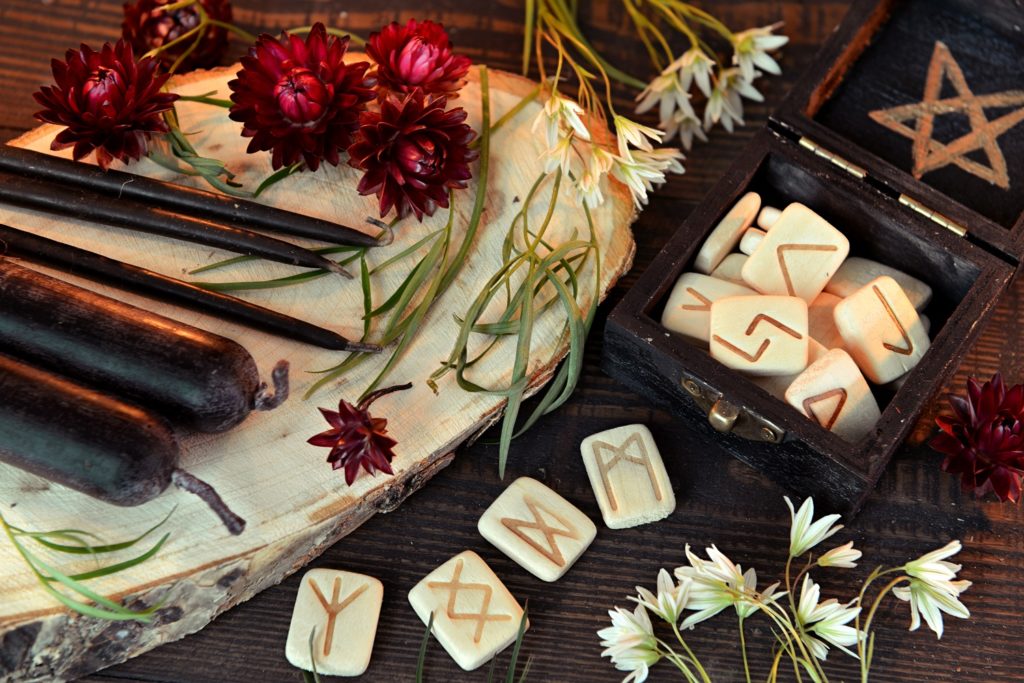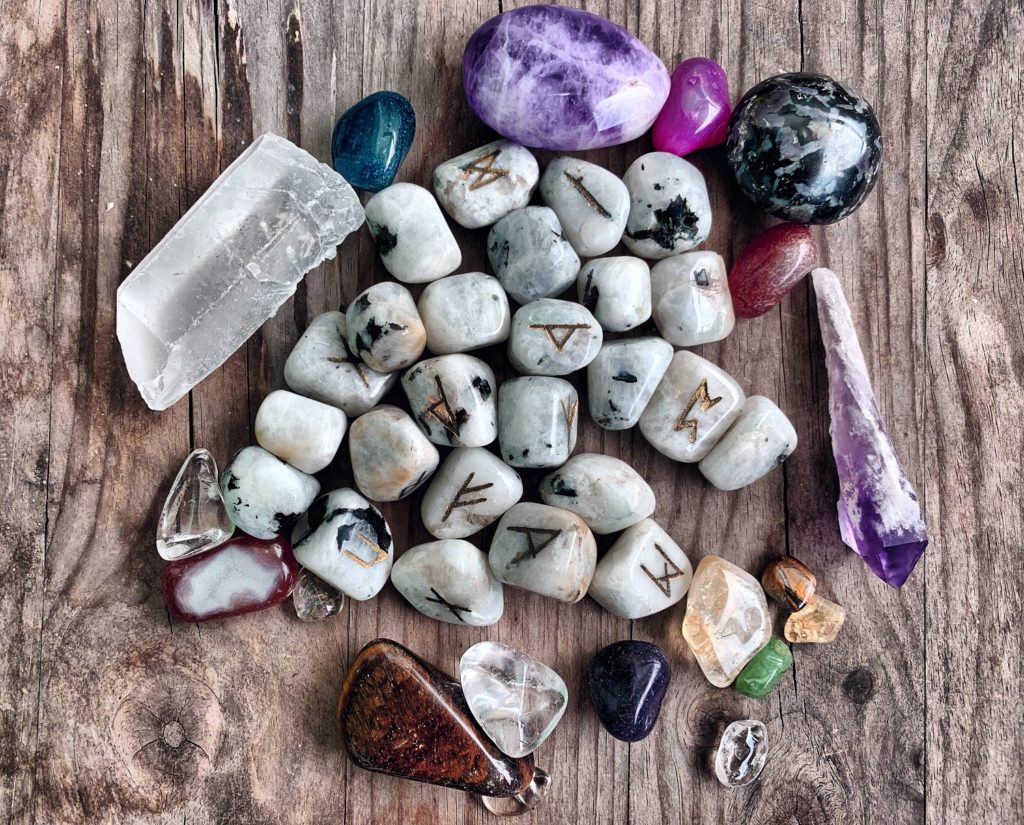Cleromancy: Divining the Future With Lots
Contributing expert: Grace Duong - Updated: May 20, 2022
If you’ve ever flipped a coin to make a decision, you can say you’ve practiced cleromancy. This ancient form of divination is documented throughout history and across cultures and can still be found in use today. When you read about people casting lots, consulting the runes, or throwing bones, they are performing a type of divination practice to discern the wisdom and will of their deities. We’ll go over all you need to know about cleromancy, the way it works, and how you can use this simple divination tool.
What is Cleromancy?
So what are these lots being cast? Lots are a set of objects like stones, straws, or pieces of paper that are thrown at random and interpreted to make a decision or to answer a question. Cleromancy is simply the act of throwing objects with special meanings for the purpose of divining the future or providing answers.
A set number of objects that have each been assigned their own meaning are held by the querent. They ask their question as they hold the objects in their hands and throw them down on a cloth or tray. The lots are then interpreted by the querent or the reader to determine how the question was answered. Each object’s position and placement in relation to the others is taken into consideration as the answer is revealed.
History of Cleromancy
Cleromancy, like most divination practices, has been recorded for millenia. Indeed, all kinds of objects have been imbued with unique meanings across a variety of cultures. In ancient Greece and throughout the Middle East, stones or small pieces of wood were used when casting lots. Each piece would have a symbol drawn or carved onto it that corresponded to a meaning. Answers would be given and decisions made by the throwing of these objects.
The Chinese form of divination uses the I-Ching text to divine information about the future. This “Book of Changes” contains 64 unique hexagram symbols that each have their own meaning. The I-Ching is used in multiple ways in relation to cleromancy. One way is through the use of 50 yarrow stalks. The stalks are cast, counted, and then interpreted using the hexagrams found in the I-Ching. There are also a number of coin methods used to interpret the I-Ching and obtain information.

Types of Cleromancy
As mentioned above, cleromancy’s presence throughout different cultures across history has resulted in many forms of this type of divination. Of course, a select few have gained popularity over the years — even now into the modern age. Dice, stones, pebbles, knick knacks, and sticks are all commonly used objects within the umbrella of cleromancy. In the next few paragraphs, we’ll cover the basics of the most popular forms out there and how you might be able to cast and interpret your own lots.
Tossing stones
Tossing stones, or pessomancy, is most likely one of the most ancient forms of cleromancy. As mentioned above, cultures across the Middle East and Africa used stones with inscribed symbols to cast lots. Pessomancy also made its way across Europe into Scandinavia and Germany, where the runic alphabet was used and inscribed on stones. Although the meanings given to each object across cultures was different, they were all used in relatively the same way and for the same reasons.
In ancient cultures, pessomancy was used not only for fortune telling or predicting the future but for making decisions and discerning the truth about a situation. In modern times, people still practice tossing stones as a form of cleromancy. There are many methods used today, and you can buy or even make your own set of stones.
While holding a collection of stones or pebbles with inscribed symbols, a question is asked. The stones are then thrown on a piece of cloth or into a bowl. They are then interpreted and an answer is relayed based on what side of each stone landed face up.
Casting dice
Another type of cleromancy is the casting of dice. Similar to the previously mentioned pessomancy, using dice as a divination tool is another ancient practice. Some of the first dice were made from the small bones of herd animals like sheep and goats. Those bones were covered in markings: symbols, letters, or numbers that had a specific meaning. They were then thrown down and whatever sides were facing up would be interpreted in relation to the question asked.
The standard six-sided number dice are the most commonly used in dice casting today. There are many interpretations of what each number on the six-sided die means or represents. Also, the number of dice used for a reading can affect the overall meaning. Some people roll one die in the morning to see what kind of day they’re going to have while others may say you need to roll at least three for a true divination reading. Sometimes people even assign their own meanings to each number.
Although the meanings and the methods may vary, depending on who is casting the dice, we’ve gathered information on popular ways to cast dice today. Some people begin by rolling their dice into a bowl, a drawn circle, or onto a plate. The numbers that land face up are then interpreted using their assigned meaning and translated into an answer to the question that the querent asked. If more than one die is rolled, the numbers are usually added up.
Although meanings and symbolism changes over time, we’ve compiled a list of some commonly used meanings for each number on a standard six-sided die:
| Meanings of a Standard Six-Sided Die | |
|---|---|
| One | Beginnings, independence, pioneering, new opportunities. |
| Two | Duality, partnership, cooperation, harmony, maintaining balance. |
| Three | Creativity, luck, community, artistic, abundance, learning lessons. |
| Four | Order, responsibility, loyalty, dependability, structure, being mindful. |
| Five | Freedom, love, communication, change, taking responsibility. |
| Six | Harmony, beauty, home, family, patient, nurturing, familial leadership. |
Charm casting

Charm casting is an easy way to create a personalized cleromancy practice. People can simply gather items from around their house that won’t be missed or needed daily. These can be things as mundane as a marble, paper clip, eraser, coin, figurine, or jewelry. More classic items like small bones, crystals, bark, feathers, or beads can be used also.
Once a collection of charms is gathered, meanings are assigned to each one, depending on what comes to mind when you look at it. For example, a key could hold the meaning of enlightenment or unlocking secret knowledge. It doesn’t have to be profound, but it should be significant and memorable to the charm caster.
The person casting the charms then holds the charms in their hands and asks their question aloud. Once the question is asked, the charms are dropped on a cloth, like a scarf or a thin piece of fabric. The objects are then observed and the answer is interpreted depending on how the objects landed. The position, location, and interaction with the other charms is all taken into consideration when interpreting the answer to the question asked.
Finding a Cleromancy Reading
Cleromancy is a tool that some psychically inclined or clairvoyant people may use and provide as a service to the public. Going online to a psychic website is one way you can look for a reading. Rune casting is a commonly offered online service under the cleromancy umbrella. There are even options for free autogenerated cleromancy readings on websites like ifate.com. As we mentioned earlier, people often buy or create their own cleromancy sets to perform personal readings. It’s a subject that can be easily researched and learned in order to perform readings for yourself and others.
How to Prepare for Your Cleromancy Reading
Similar to other forms of divination, cleromancy is a tool used to answer questions, make decisions, and attempt to predict the future. It’s important to get clear on your intention and on what you want to know or ask. Before your reading, it’s helpful to write down some ideas for questions you’d like to ask. Get as detailed as you can and try to narrow it down to one or a few key questions. Cleromancy can be used for yes or no questions but as with any form of divination, it may be best to ask how, what, and why questions like:
- How can I take my romantic relationship to the next level?
- What are the best steps to take on my career path right now?
- Why am I struggling with letting go of the past?
- What actions can I take to get beyond the situation at hand?